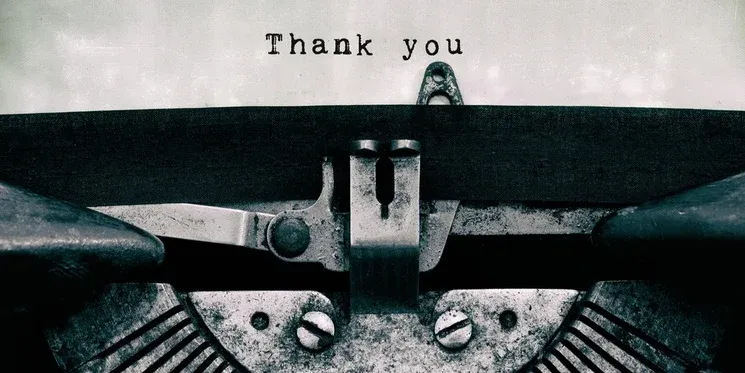![]() A thank you page is the web page that your prospects are directed to after they’ve filled out a form on a landing page. But while it’s the final stage of the conversion path it’s no means the end of the story.
A thank you page is the web page that your prospects are directed to after they’ve filled out a form on a landing page. But while it’s the final stage of the conversion path it’s no means the end of the story.
At the heart of a thank you page is the simple act of saying “thanks." But beyond that it has the potential to do so much more - in creating a great first impression, enhancing your prospects' experience of your website and building on the trust that they’ve demonstrated in you.
Crucially too, your thank you pages can be invaluable in helping you to qualify your leads, to decrease your bounce rate and to improve engagement with your brand.
In this blog post we explore the 6 best practices of successful thank you pages that will enable you to further engage with your B2B prospects, improve your conversions and bolster your inbound marketing efforts.
1) Show your appreciation
A thank you page is so much more than just a confirmation message.
Out of the multitude of online offerings available, your prospect has shown an interest in what you have to offer. So, while your brand is still at the top of their mind, your thank you page is a prime opportunity both to express your appreciation and to build on the momentum you’ve created.
A little genuine gratitude can go a long way. So be sure to be specific and genuine with your thanks.
 2) Deliver what you’ve promised
2) Deliver what you’ve promised
Your thank you page is where you make good on your promise.
If it’s the confirmation of a purchase, then you’ll want to reply with a concise and relevant message that reassures your customer that their action was successful and that clearly explains what they can expect to happen next.
If the purpose of your thank you page is to deliver a piece of content - whether an eBook, white paper, case study or video - then your thank you message is where you’ll provide clear instructions of when, and how, they can get the offer.
Or if it’s to confirm a call-back or to book a consultation, then it’s about being specific about your response time so you set clear expectations. So aim for “we’ll be in touch (at this time) or within (a set time-period)” rather than the ambiguity of “we’ll be in touch soon" which can leave your prospects guessing.
3) Reinstate your navigation
When it comes to landing pages, best practice is to strip out all navigation to ensure your prospects stay focused and on-task so that they fill out the form on your landing page without any potential for distraction.
Your thank you page on the other hand is the perfect opportunity to re-introduce your navigation to encourage your prospects to take a look around and explore your brand further.
While your thank you page represents the end of the conversion process (from call to action to landing page to thank you), it shouldn’t feel like the exit point but rather should encourage further exploration and engagement.
4) Provide additional direction
You already have your prospect’s attention, so this is a chance to make the most of it and move them further along the buyer’s journey. So what other content can you offer them that follows on from, or relates to, what they’ve already expressed an interest in?
Offering a secondary call to action can work well at this point, as having already submitted their information a first time they’ll be more inclined to click again. It might be an invitation to sign up to your blog, email list or newsletter. It might be a link to a supporting video or an invitation to join a webinar.
5) Ask for feedback
Asking for feedback from your prospects can be a great way to gather more information and to build credibility.
It might be a short survey of their impression of their experience - why they subscribed or submitted their details, their perception of the submission process, what they thought of what they received and how they think you could do better.
6) Encourage social sharing
As new conversions, your prospects are the perfect people to help spread the word about your brand. And if they've found your offer worthwhile then they're perfectly placed to tell others about it.
So why not use your thank you page to increase your social reach by including social share buttons which will encourage your leads to follow you and to share your content with others.
A well-constructed thank you page is a vital opportunity for B2Bs to make a great first impression and to demonstrate that you can deliver what you promise.
It can also play an invaluable role in your overall inbound marketing strategy in enabling you to engage with your prospects, build trust and guide them through the buyer’s journey.


